Frequently Asked Questions
What are you looking for?
Find answers and solutions to common Trading issues. If you cant find an answer, contact us and we will be happy to help.
Top 13 Most Popular FAQs
Because market makers are taking the opposite side of their client’s trades it adds a great deal of liquidity. It can also assure traders that they get filled quickly when placing trades. Market makers also set their own spreads, and because competition in this space is so fierce these spreads are often very good. The market making broker also provides trading software to clients free of charge, and often their price movements aren’t as volatile as the prices quoted on ECN or STP networks.
Because an ECN passes all its trades along to the institutions it receives pricing from there is little chance of price manipulation taking place. It is also possible to get excellent spreads from the ECN broker during periods of great liquidity. In some cases, you could get zero spreads on the most liquid pairs like the EUR/USD, USD/JPY, or GBP/USD. Even when there is a spread it is often quite low since the ECN broker gets its prices from a number of sources. Scalpers can do better with an ECN broker too because their pricing tends to be more volatile.
The STP broker has many of the same benefits as the ECN broker. They will typically offer very competitive spreads since they are getting pricing directly from the interbank market. They also offer almost no chance of price manipulation because they never take the other side of their client’s trades. STP brokers are also the most likely to offer no requites and positive slippage, or better prices than what you’re quoted. Finally, the STP brokers typically have no restrictions on scalping, hedging, news trading, and high-frequency trading.
The minimum recommended amount for the RAW ECN account is USD$50. Just remember that you can open and keep a live trading account even with no balance, as there is no account keeping or maintenance fees.
For your subsequent deposits, the minimum deposit amount is USD$50.
We offer two types of accounts: Standard STP account and our most popular,Raw ECN account.
There is no commission charged on the Standard STP account but instead, there is a markup on the spreads above the Interbank rate received from our pricing providers.
Our Raw ECN account shows the raw spreads received from our pricing providers. On this account, there is a commission charge applicable for USD$6 per standard lot round turn.
You can compare the difference between our various trading account types by using the table at our compare forex trading accounts page here.
ECN, short for ‘electronic communication network’, revolutionises trading by seamlessly connecting individual traders to a vast network of liquidity providers, including banks, brokerages, and fellow traders.
By utilising this automated system, ECN empowers traders of all account types, regardless of their balance size, to access the financial markets with ease and efficiency. Say goodbye to barriers and embrace a world of limitless trading possibilities through ECN.
ECN trading, short for ‘electronic communication network’ trading, is a state-of-the-art trading method that operates on a computerised system. It matches buy and sell orders for various financial instruments, such as currencies, stocks, and derivatives. ECN trading allows traders to tap into deep liquidity provided by multiple market participants, resulting in highly competitive pricing, rapid order execution, and enhanced transparency.
While it has traditionally been popular among professional traders like hedge funds and institutional investors, ECN trading is increasingly being embraced by retail traders, levelling the playing field for all.
Trading individual stocks involves buying and selling shares in specific companies, while trading indices involves trading a basket of stocks, providing a broader exposure to a particular market
Contracts For Difference (CFDs) are popular Over The Counter (OTC) financial derivative products which enable you to trade on the price movement of financial assets like Currency pairs Indices Futures, Commodity Futures, Cryptocurrencies, Shares and Exchange Traded Funds.
With CFDs, you can trade freely on price fluctuations 24/7, without actually owning the underlying asset or acquiring any rights or obligations in relation to the underlying asset. The main benefit of trading CFDs is the flexibility to trade against the price movements without actually buying or selling the physical instrument. That means never having to take ownership of barrels of oil or blocks of Gold.
Take your pick from a huge selection of Commodities, Stocks and Indices with some really competitive conditions and dedicated support.
- A selection of powerful trading platforms, including MetaTrader 4 and MetaTrader 5 platforms for desktop, tablet & mobile
- Cutting-edge Web trading platform (no download and installation required)
- Trade leading US, European & Asian stocks trade as CFDs
- Go long or short – trade your view on the market
- Get leverage of up to 400:1 on CFD trading
- Trade on the move with our new Today Markets app with unique risk-limiting tool AvaProtect
- Both manual and automated trading platforms available
- No Exchange fees – You do not own the underlying asset and do not acquire any rights or obligations in relation to the underlying asset. It is a contract between the client and Today Markets.
- Leverage trading/strong> – You need significantly less capital to open a trade in comparison to owning the underlying asset. Leverage is a double-edged sword, of course, as it can significantly increase your losses as well as your gains.
- Multi-vehicle Investment – The ability to trade a range of instruments from the same trading platform.
- Trade on both rising and falling markets – Open either short or long positions according to the market conditions and your trading strategy.
- Hedging potential – A buffer for your trades if the trade is not going in the intended direction, you can open the equivalent position in the opposite direction reduce the risks.
A stock market index is a measurement of a portion of the stock market. It is computed from the prices of selected stocks, typically a weighted average. It is used to give an indication of the market’s overall direction.
The most popular indices to trade are often those representing large portions of the global stock market, such as the S&P 500, Dow Jones Industrial Average (DJIA), NASDAQ Composite, FTSE 100, Nikkei 225, and the DAX.
Couldn’t find your answer? Ask a question
Top Most Popular Forex FAQs
One unit is essentially one of the first name currency. If you require assistance with calculating your desired trade size, please contact our Client Management team.
No, we do not offer currency exchange facilities.
Holding rates for FX are based on the tom-next rate in the underlying market for the currency pair and are expressed as an annual percentage, with an additional Today Markets charge of 1% added. To view the holding rates for individual FX pairs, please refer to the ‘Product Overview’ for the relevant pair.
Prices streamed from our liquidity providers (November 2015 – Deutsche Bank, JP Morgan, Barclays, Goldman, UBS, Citibank and HSBC) are consumed by our automated pricing engine where the ‘best’ and most representative price is used to create our quotes on which clients trade.
For your subsequent deposits, the minimum deposit amount is USD$50.
In order to open a position you will be required to deposit an amount of money known as margin. The margin required reflects a percentage of the full value of the position. The first step is to establish the margin rate for the instrument you are trading. Margin rates can be found within the trading platform by selecting ‘Library’ from the main menu (which displays the full list of products), then select the arrow icon next to the specific product which will show a sub-menu. Choose ‘Product Overview’ from the sub-menu to view the margin rate details. The margin rates are tiered depending on the size of your position. To see the tiered rates, select the arrow icon to the right of the margin rate section.
To calculate your margin requirement, take your margin rate and multiply this by the total value of the trade. Your estimated margin is also conveniently displayed within the order ticket. Note, margin is independent of the direction of your position and will increase or decrease in line with the level one mid-price point of the product. If the price increases, your margin requirement will be higher; if the price decreases, your margin requirement will become lower.�
If you are trading forex instruments on our CFD platform there is a charge of 50 basis points (0.5%) to convert foreign currencies into your home currency. No conversion charge will apply if you are spread betting, as all products are priced in your home currency.
By utilising this automated system, ECN empowers traders of all account types, regardless of their balance size, to access the financial markets with ease and efficiency. Say goodbye to barriers and embrace a world of limitless trading possibilities through ECN.
You can sign in to your account as soon as your application has been successful and you have clicked on the verification link sent to your registered email address. However, you won’t be able to place a trade unless there are sufficient funds in your account to open a position. If you prefer to test strategies in a risk-free environment, our free demo account will allow you to practise trading with virtual funds.
Depending on your circumstances and the region you are a resident of, we may request that the documentation you submit to us is certified. A certified copy is a copy of an original document that has been endorsed as a true copy of the original by an approved individual. Examples of approved individuals who can certify documents include:�
- Lawyer�
- Notary public�
- Commissioner of oaths
- Accountant�
- Bank manager�
- Doctor�
- Ambassadorial staff�
- Law enforcement official
The endorsement or stamp needs to appear on the page that shows the information required. We are not able to accept a certified document with the certification on a separate page.�
The certification on all certified copies should include:
- The statement: “Certified to be a true copy of the original”
- The name and signature of the person who has certified the document
- The certifier’s job title
- The certifier’s telephone number
- The certifier’s company stamp, if applicable or their address
- The date of the certification
We are able to set up your account with scanned copies of your certified documents. However, you need to send us hardcopies of the certified documents within two weeks of opening your account in order to withdraw funds.
Translated documents must be annotated with the wording “True translation” and must be signed and dated by the translator.
Each client can have one CFD account and one spread betting account at the same time. Multiple CFD or spread betting accounts may be available at our discretion.
As a regulated financial services firm we are required to comply with industry ‘Know Your Customer’ (KYC) requirements to identify our customers and check they are who they say they are. We are required to verify your identity and obtain information about your source of income and wealth and level of experience with financial products. Security of clients’ personal information is of the utmost importance to us. For more information, please read our privacy and security policy, which explains in more detail how we deal with the personal information that you provide us.
You will need to notify our Client Management team in writing, either from your registered email address or by post, to our registered office address. You will need to withdraw any funds in your account and provide full contact details and your account number. We may contact you by phone to confirm your closure. If we are unable to contact you by phone we will always send you an email. You may need to reply to that email to confirm your closure request.
Our aim is to help you start trading as quickly as possible. If you reside in the UK, you will get a response from us within 60 seconds from when you submit your online application form.
However, there may be cases where additional documentation is needed before we can process your live account application.
If you reside outside the UK, the account opening depends on how quickly you can provide us with the required supporting documents; on average the process takes a couple of days. Once you have submitted your documents, we will contact you within one business day.
On the iPhone app, tap the ‘More’ button, then ‘Switch Accounts’. On the Android app, select ‘Switch Accounts’ on the left side menu.
Yes, we offer a demo account with $10,000 of virtual funds. This allows you to try our platform in a risk-free environment, and practise trading strategies and techniques.
To open a demo account, you’ll need to provide a valid email address, your full name, phone number and a password. Once you’ved opened a demo account, you’ll need to click on the verification link sent to your registered email address to activate it.
No, you can keep your demo account open for as long as you like, and use it to test strategies, even after you’ve opened a live account. Add more virtual funds at any time via the ‘Payments’ menu.
Please note that shares on a demo account are available for a limited period due to exchange restrictions. Once activated, you’ll be able to practise trading on shares for 30 days.
Select the ‘Start trading’ button at the top-right of this page, or apply online here. Use your demo account login details to get started, and then follow the step-by-step instructions to apply for your live account.
Alternatively, you can log in and apply from within the platform, once you’ve created a demo account. Just select the profile icon in the top left, and then the ‘My Accounts’ tab.
Couldn’t find your answer? Ask a question
Most Popular ETFs & Commodities FAQs
Movements in stock market indices are influenced by factors such as economic indicators, interest rates, political events, and company earnings reports.
For your subsequent deposits, the minimum deposit amount is USD$50.
The most popular commodities for traders are gold and oil. This is because both enjoy excellent liquidity and sources of information. However these are not necessarily the best commodities to trade. The best commodity for any trader is the one they understand the best. One where they have detailed knowledge about the market, or about supply and demand for the particular commodity. It’s this deep knowledge that makes it easier to successfully trade any commodity. And anyone can get this type of knowledge through research and study.
The traditional way to trade commodities is by using futures contracts. However this is not always the best way to trade commodities. For one thing many traders don’t have a futures trading account. And trading futures requires a fairly large upfront investment. Plus futures involve leverage, and while this can inflate gains, it can also magnify losses. All of these issues can be avoided by using CFDs to trade commodities. Liquidity is never an issue with CFDs, you can get started with a few hundred dollars, and you control the leverage, or lack of leverage, when trading CFDs.
By utilising this automated system, ECN empowers traders of all account types, regardless of their balance size, to access the financial markets with ease and efficiency. Say goodbye to barriers and embrace a world of limitless trading possibilities through ECN.
Many people think about trading commodities and they get the image of the trading pit, similar to what you see in the movie Trading Places, where Eddie Murphy and Dan Aykroyd corner the market on orange juice futures. While commodities trading may have looked like that in the past, in the 21st century it is electronic and commodities markets can be traded online from all corners of the globe. All that’s needed is a trading account with a broker that offers access to the commodity markets and anyone can trade commodities online.
Trading ETFs has become popular because it combines the ease of stock trading with the diversification found in mutual funds. They can be bought and sold in the same way as any stock, but because they mirror the composition of some index or other sector they are a useful way to capitalize on larger macro trends in the market. ETFs make it possible to speculate on the broader markets, such as the S&P 500. They can also be used in commodity trading, where using futures can be costly and require large upfront capital.
Trading ETFs is a perfect way for a beginner to become familiar with the markets and to begin their trading career. This is because ETFs feature low costs, excellent liquidity, diversification, a broad choice of investments, and a low initial capital requirement. Beginners can use some of the most popular trading strategies to get started, and can focus on any industry, asset type, or market sector they like. There are even inverse ETFs that can be used to mimic shorting a stock, but with fewer risks.
Because ETFs are bought and sold similarly to stocks or other asset classes they can be used to make profits. However they do not guarantee profits. A loss can be incurred from an ETF trade just as it can from any other type of trading. So it is important to understand the ETF you’re buying before investing. Some ETFs use short selling or leverage to try and generate better returns. This also increases the risks involved in trading these ETFs.
Stocks and bonds are quite different in the financial world since stocks represent a partial ownership of a company, while bonds represent debt owed by a company to the bond holder. In some respects they do seem similar however. Both are used to raise capital. And both can give investors regular income since bonds pay out the interest payments to the holder, while stocks often pay dividends. Of the two stocks are far more common in the open market, and typically only the largest blue chip companies will have bonds that trade on public exchanges.
There are a number of different types of bonds, from corporate bonds issued by individual companies, to municipal bonds that are typically issued to pay for a specific project, such as improvements to schools, to government Treasuries which fund the Federal government. At their heart they are all the same, they are all debt instruments. So which are best to trade? Rather than considering the source of the bond it is helpful to consider the ranking instead. There are three major bond ranking agencies, Standard & Poor’s, Moody’s, and Fitch. They all use a similar ranking method and the higher a bond is ranked, the safer it is. However lower ranked bonds are often better for trading as investors can be willing to pay more as they chase the yield.
There are a number of bond trading strategies with names like swaps, barbells, and ladders. Each has a specific function, for example the swap is often used to lower an investor’s tax liability, or to simply improve the yield being collected. A ladder is used to smooth out interest payments over a period of time. A barbell uses primarily very short and very long maturity bonds for diversification and flexibility. One profitable strategy is called rolling down the yield curve. As long as bonds with short maturities yield less than those with long maturities it is profitable to buy the long dated bonds and then sell them after 2-3 years, collecting a profit and reinvesting the proceeds in new long term bonds.
Couldn’t find your answer? Ask a question
Most Popular Meta FAQs
Not only does MetaTrader 5 facilitate trading currencies, it also allows for stock trading. And AvaTrade has hundreds of top listed shares available to trade as CFDs on MetaTrader 5. The broad selection of analysis tools and detailed order types makes the MT5 platform ideal for stock traders of all types. You can even set up automated trading of stocks, which can be very useful in capturing breakout moves, or trading range-bound stocks. MetaTrader 5 is the state-of-the-art trading platform that’s perfect for trading all asset types, including stocks.
You would think that since it is the newest version of the MetaTrader platform that MetaTrader 5 would be superior to MetaTrader 4. And yet there are more traders out there still using MetaTrader 4. That’s because the two are actually geared towards different kinds of trading. MetaTrader 4 was created for forex trading, and it excels at that market. MetaTrader 5 was created as a multi-asset trading platform, and it is typically better when trading in assets other than currencies. It has more order types and more indicators, and allows for the detailed analysis of any type of asset.
One of the benefits of using MetaTrader 5 as your trading platform is that it is free to use. With our demo account you can download it and begin analysing assets immediately. Many traders are very surprised by this since MetaTrader 5 provides so much value to traders. We don’t believe you should have to pay for the tools you need to trade though. We’re making trading easily available to everyone, and one part of that mission includes offering MetaTrader 5 for free to anyone who wants or needs it.
On a strictly technical basis the answer has to be yes. The Expert Advisors and robots created in MetaTrader 5 are nothing more than tools. That said, like any tool they are only as good as they’ve been created. And they are only good for the purpose they been created for. You wouldn’t try to use a hammer to turn screws and by the same token you can’t expect an Expert Advisor to do anything it wasn’t programmed to do. So long as it was programmed well, and is being used properly, algorithmic trading can be very successful. If it wasn’t there wouldn’t be so many algorithms being created.
It depends on your expectations. If you think you can simply pop in an algorithmic trading EA and MetaTrader 5 will make you truckloads of profits then it’s certainly a bad thing in your case. However, if you approach algorithmic trading realistically and with a sense of responsibility you really should be able to make some profits without taking on undue risks. Algorithmic trading is also good for removing some of the emotional and psychological aspects of trading. Some traders have issues with pulling the trigger or entering trades. An algorithmic trading EA will get past that issue.
Getting your own MT4 demo or live account is quite easy at Today Markets. Simply register for an account in under two minutes, then head over to the MetaTrader 4 page on our website, where you can download the MT4 platform. When you launch MT4 you can enter either your demo or real account credentials (these are sent to you via email when you register) and log into the platform. From there you can access all the powerful features MT4 has to offer.
MT4 is a cross platform application that can be downloaded for desktop use, accessed as a web trader in an internet browser, or installed as an application on your mobile device. There are mobile versions for both iOS and Android operating systems, so you can have the power of MT4 in your pocket no matter which device you use. Plus, the versions will all synch with each other, so when you place an order on your PC version of MT4 in the morning you can go in and modify it later in the day on your smartphone.
Both MT4 and MT5 are the official versions created and distributed by MetaQuotes Software. The new MT5 version is considered to be superior for stock trading and order management, while the older MT4 platform is considered to be superior for forex trading. As a matter of fact, most retail traders will notice little difference between the two platforms. They both provide the basic trading functions and features needed to trade successfully.
Many traders do report that Expert Advisors work for them, although with the caveat that you must choose the proper Expert Advisor. There are many Expert Advisors available and some are inferior, while others do exactly what they are supposed to do. One of the great benefits of using these programmed tools is they will take all the emotion out of your trading. One of the downsides is that changing market conditions can break an Expert Advisor, changing it from a profitable tool to a money draining liability.
There are many different Expert Advisors available and each is designed to do something different. There are also free and paid Expert Advisors available. So, the best Expert Advisor will depend on your own needs and expectations. We could probably look at free and paid tools separately too because let’s face it, we all expect more from a tool that we pay for versus one that’s free. And yet there are some very valuable free Expert Advisors available from the MetaTrader 4 community.
While there are some Expert Advisors that are designed to run 24/7 and always remain in the market, others are not so pervasive and aggressive. For example, there are a number of Expert Advisors that were developed specifically to work around news releases such as central bank monetary policy releases, GDP and CPI releases, or unemployment data releases. These Expert Advisors might only run for 10 days out of the entire year. Other Expert Advisors have a broader perspective on the markets and these do run 24/7 for as long as they remain relevant in their given market.
Couldn’t find your answer? Ask a question
Most Popular Fundamental FAQs
To begin employing fundamental analysis, every trader should find a number of informative sources, which will provide him/her with knowledge that will help with fundamental analysis, thus assisting and improving his trades. We invite you to check out our blog, which updates on a daily basis with crucial data relevant to all instruments.
The top-down approach to fundamental analysis begins by considering the health of the overall economy. It looks at macroeconomic factors such as GDP, interest rates, and inflation levels to determine the overall direction the economy is heading in. It then moves down to look at the sectors and industries within the economy that are performing best, and offering the best trading opportunities. Alternatively, a trader can use the bottom-up approach to fundamental analysis, which starts by looking at individual stocks or assets, and works up to the broader sector and then to the overall economy. Bottom-up analysis is more focused on the microeconomic factors that can impact on markets.
The goal of fundamental analysis is to determine a fair value for an asset or individual stock to see whether it is overvalued or undervalued and whether it should be bought or sold. The goal of technical analysis is to evaluate price action, looking for historical patterns that can help to forecast future price movements. The two methods use quite different hypothesis and methods, and one is not inherently better than the other. Indeed, many successful traders use a combination of fundamental analysis and technical analysis in their trading strategies.
Some people claim that there is no real relationship between the past movement of prices and the future movement of prices, making technical analysis invalid. However, it is easy to see that there are patterns in prices that can be used to predict market movements via technical analysis. There are several theories as to why this is true. One is that chart patterns display the action inherent in an auction market and thus provides predictive value. Another is that orders cluster around psychologically important levels. And some theorize that technical analysis is a form of self-fulfilment in that because many traders believe prices should reverse or continue at certain levels, they do.
This is going to depend in many ways on your trading style or strategy. A swing trader is likely to use different indicators compared with a scalper. Some analysts claim support and resistance are the most important levels since they are present as part of almost every technical indicator. Support levels and resistance levels become more “important” when they are confirmed by two or more different indicators, and using multiple indicators can provide very powerful trading strategies.
A divergence is when two indicators are not moving in the same direction even though they would usually be expected to do so. While this might create confusion, divergences are often indicators of a significant turning point in the market. For example, an oscillator may indicate weakness in the market even though price continues going higher. Divergence should be traded cautiously however since it can last for a long time and doesn’t typically provide timely signals for trading.
The two types of market analysis – fundamental and technical – provides important information about the price of an asset, and the condition of the sector or industry it is in. Fundamental market analysis focuses on economic data. That can be either macro data, such as GDP and employment reports, or microdata that is specific to one company such as the P/E or P/S ratios. Technical market analysis looks at the historical price action of an asset, seeking to identify patterns that can be used to locate potentially good entry and exits points for trades. So, at the end of the day the purpose of market analysis is to locate good trading opportunities.
Fundamental analysis seeks to measure the intrinsic value of some asset, usually a stock, by examining its related financial or economic factors. The end goal is to arrive at some number, or series of numbers, which an investor can then compare with the current price of the asset to determine if it is overvalued, undervalued, or fairly valued. This information is then used to make decisions on whether to buy or sell an asset. Fundamental analysis is one of two ways that investors use to values assets, the other being technical analysis.
Technical market analysis uses data such as the price data and trading volumes of assets to determine if they are currently overbought, oversold, or fairly valued. With technical analysis an investors tries to determine how the supply and demand of an asset affects its price, trading volumes, and liquidity. Where fundamental analysis is typically used to evaluate the long-term potential of an asset, and is most useful for investors, technical analysis can be used to generate short term trading signals that are more suitable for active traders.
Couldn’t find your answer? Ask a question


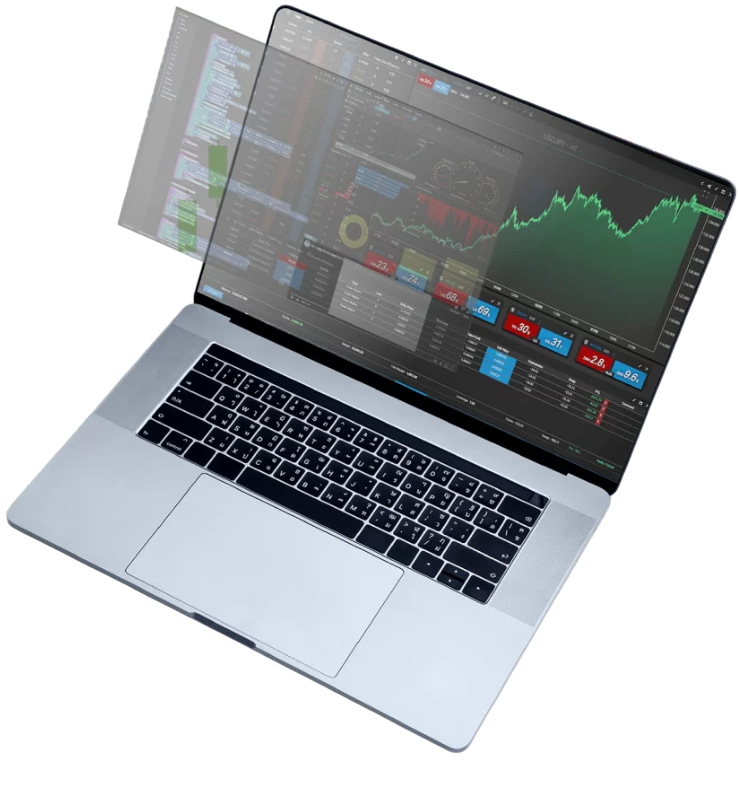 White Label Solutions
White Label Solutions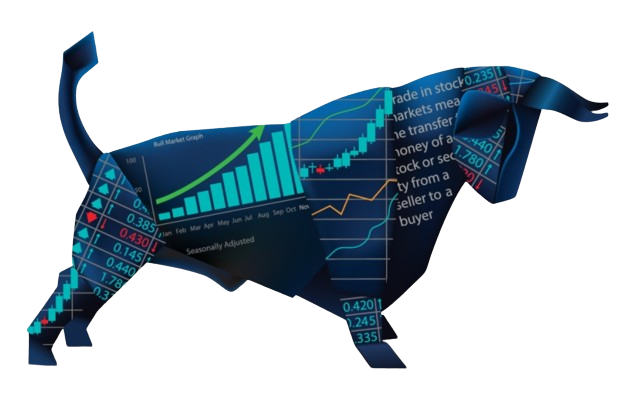 Execution
Execution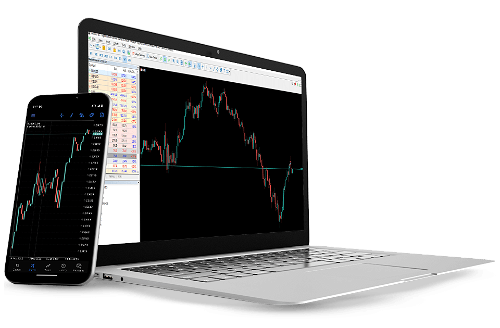 PMAM Platform
PMAM Platform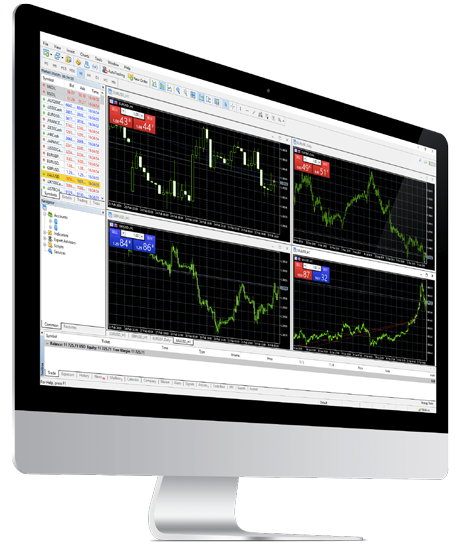 Partner Types
Partner Types Trading Signals
Trading Signals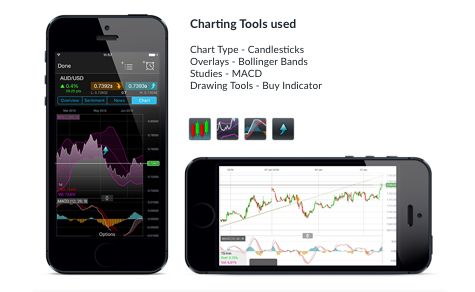 Charting Features
Charting Features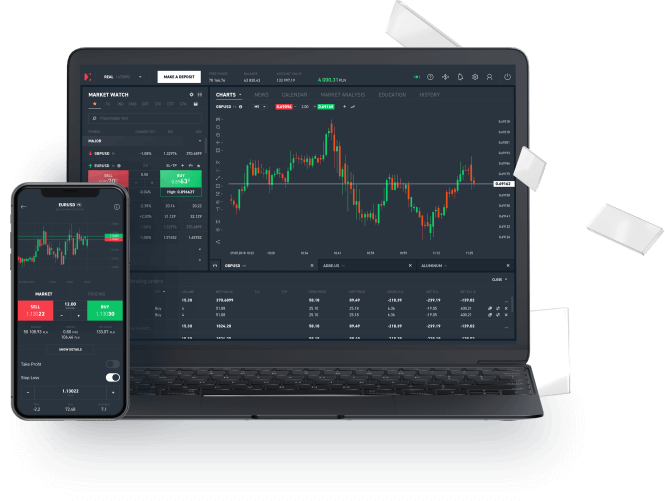 Countdown Pricing
Countdown Pricing Wealth Management
Wealth Management Guardian Angel
Guardian Angel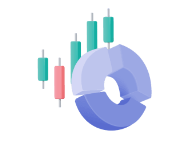 Vanilla Options
Vanilla Options